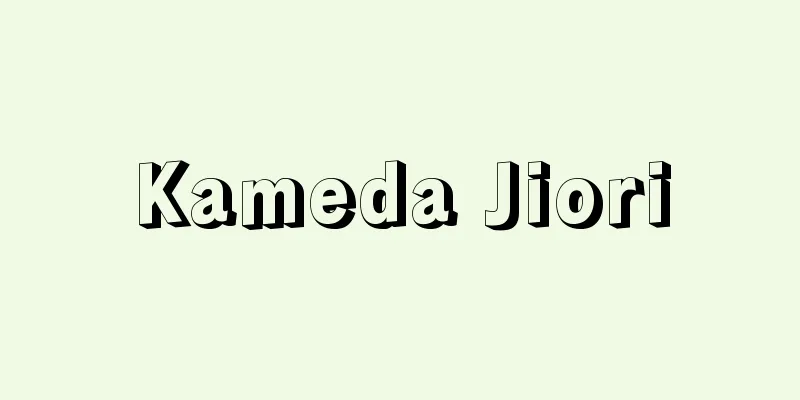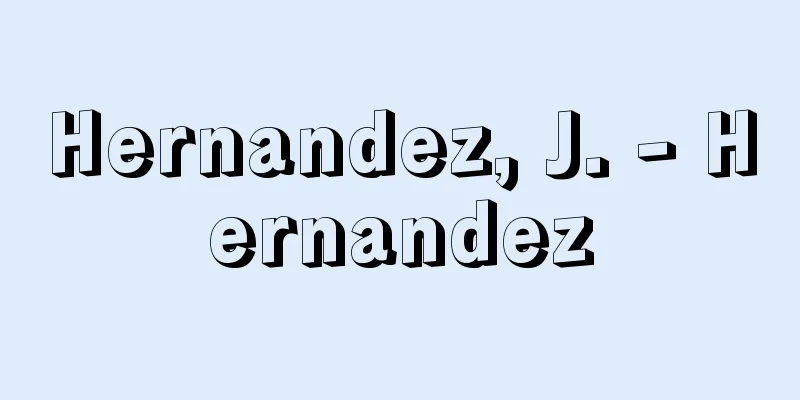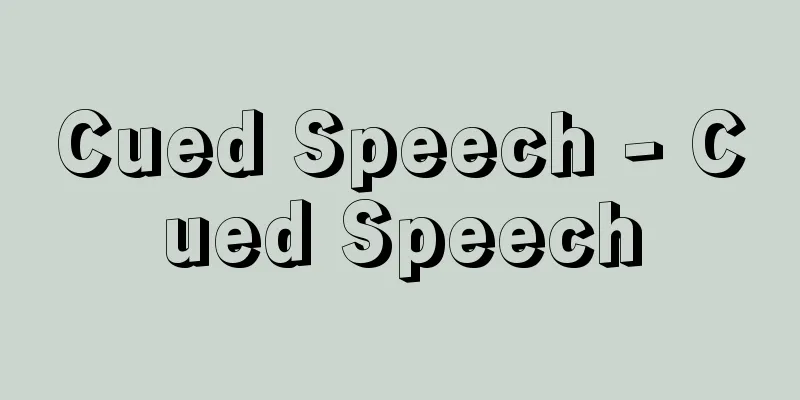Educational psychology
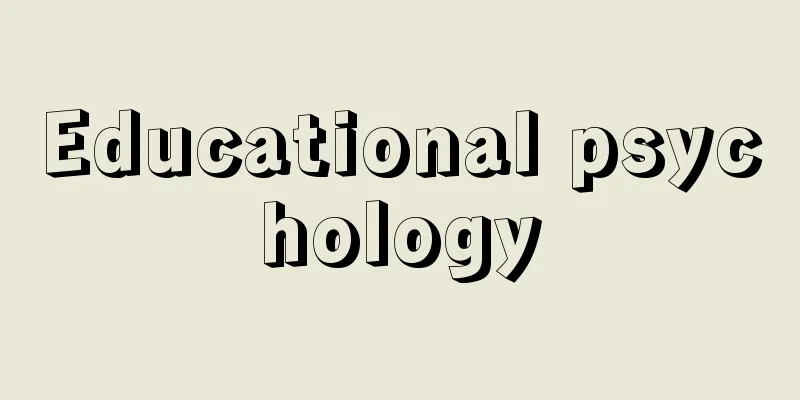
|
Education is nothing but the act of guiding and supporting human beings, beings who learn and develop. Therefore, educational psychology, which aims to theoretically and empirically clarify the phenomenon of education and contribute to its improvement, is closely related to learning psychology and developmental psychology. Research on educational psychology began when psychology first began to take shape as a science, and it has a history of over 100 years. During that time, the research area has expanded dramatically, and it has become more closely related to adjacent disciplines such as pedagogy, sociology of education, and educational technology. As a result, educational psychology today can be considered as one of the educational sciences, going beyond the boundaries of a single field of psychology. In this article, we will provide an overview of the diversity and breadth of educational psychology from the perspectives of "the history of educational psychology," "learning theory and education," "developmental theory and education," "subjects and areas of educational psychology," and "future challenges." [History of Educational Psychology] Before the birth of psychology, the science of the mind, issues regarding the human "mind" belonged to the realm of philosophy. Similarly, issues regarding "education" also belonged to the realm of philosophy. In Europe from the 18th to the 19th century, thinkers such as Rousseau, J.-J., Pestalozzi, JH, Herbart, JF, and Fröbel, FWA each advocated educational reform based on their own unique educational philosophy. However, the seeds of educational psychology were planted not in Europe but in America. Many of the psychologists who were active in the early days of educational psychology were American psychologists, including: 1) James, W., who published the book Talks to Teachers on Psychology and to Students on Life's Ideals in 1899; 2) Hall, GS, a student of James who founded child research and organized the American Psychological Association; 3) Terman, LM, who created an American version of the intelligence test invented by Binet, A. in France at the beginning of the 20th century and contributed to the development and popularization of intelligence tests; 4) Dewey, J., who was not only a psychologist but also a philosopher and educator; and 5) Thorndike, EL, who was the theoretical leader of the educational measurement movement that developed in the early 20th century and founded the Journal of Educational Psychology. It is also worth noting that in this early period, the following three approaches that would later drive the development of educational psychology all emerged. The first was Thorndike's approach, which emphasized the scientific and objective nature of research and sought theories with high generality and universality; this approach was later inherited and developed by behaviorism. The second was an approach that aimed to develop tests for diagnosing individual differences; Terman's intelligence tests became the foundation for the subsequent development of test development research. The third was Dewey's practice-oriented approach, which emphasized educational practice for educational reform. However, the third approach did not make much progress in the first half of the 20th century. Therefore, in the first half of the 20th century, the framework of educational psychology was formed based on the first and second approaches. Until the second half of the 20th century, the development of educational psychology progressed at a relatively slow pace. However, two events that occurred in the second half of the 1950s accelerated the pace of development. One of these was the so-called Sputnik shock. The Soviet artificial satellite Sputnik, launched in 1957, dealt a serious blow to the American people, and this became an opportunity to accelerate the development of educational psychology. The United States, which had been overtaken in science and technology by the Soviet Union in its struggle for world dominance, embarked on educational reform as part of its national strategy. As a result, many psychologists who had been engaged exclusively in basic research entered the world of educational psychology. Among them were such big names as Skinner, BF and Bruner, JS. Thus, a new research field called instructional psychology was born in the world of educational psychology, and educational psychology took a step forward in its practice-oriented approach. Another event was the so-called cognitive revolution. The convergence of various sciences such as psychology, linguistics, neuroscience, and information engineering led to the emergence of a new interdisciplinary and comprehensive science called cognitive science, which sparked a paradigm shift in the world of psychology. During the first half of the 20th century, when behaviorism was dominant, a new approach was developed that used information processing models to analyze and describe cognitive processes such as attention, language, thinking, reasoning, and decision-making, which had been left out of the scope of research. This approach spread rapidly to various fields of psychology, and even to the world of educational psychology. This made it possible for the establishment of instructional psychology, as mentioned above. Finally, let us touch upon two important events that have occurred since the 1980s. One is the rise of social constructivism, which expanded the scope of research in educational psychology beyond school education to include informal education in the home and local community, and even the social and cultural conditions surrounding schools. The other is the emergence of learning science, which will be discussed later. [Learning theory and education] Learning and education are two sides of the same coin, and the development of educational psychology is heavily dependent on the development of learning theory. Below, we provide an overview of the history of the development of learning theory. The history of learning research is woven together by the contrasting theories of association theory and cognitive theory. Association theory is a behaviorist learning theory that flourished mainly in North America from the 1910s to the 1950s. Behaviorism claims that the subject of research is limited to "behavior" rather than "consciousness" as Wundt put it. In other words, it claims that psychology cannot become a true science unless the subject of research is "behavior" that can be observed from the outside. Behaviorism believes that complex behavior can be reduced to elements of associations between stimuli and responses through analysis, and the main research topic is the problem of learning, which is the process by which such associations are formed. For this reason, behaviorist learning theory is generally called SR association theory. While behaviorist psychology was developing rigorous and sophisticated theories of memory and learning based on objective experimental data, Gestalt psychology flourished in Germany. Initially, Gestalt psychology developed a psychology based on a holistic and dynamic view mainly in the field of perception research, but it eventually promoted the rise of cognitive theory in the fields of learning, memory, and thinking. However, until the 1950s, association theory was more prevalent than cognitive theory. This was because the concepts and hypotheses used in cognitive theory were vague, and the methodology for experimentally verifying these concepts and hypotheses had not yet been fully established at that time. In contrast, association theory initially produced sophisticated theories based on rigorous experimental data, mainly in the fields of learning and memory. Furthermore, as the most promising theory for explaining all cognitive processes, including not only learning and memory but also language and thinking, it seemed to be steadily expanding its scope of application. However, as efforts were made to expand the field of research in this way, it gradually became recognized that human cognitive processes are complex and active processes that cannot be explained by the simple diagram of the association of stimuli and responses. In the mid-1950s, a new approach to studying cognitive processes emerged: cognitive psychology. Cognitive psychology regards humans as a kind of information-processing body (a sophisticated computer, so to speak), and describes the human cognitive process using an information-processing model. In essence, cognitive psychology regards the human cognitive process as a series of information-processing processes in which information is encoded, stored, and retrieved and used as needed. In cognitive psychology, which was established against this background, an important research theme is to clarify the structure of human knowledge. This is because humans cannot perform any cognitive activity without knowledge. Therefore, the definition of learning in cognitive psychology is "the process by which a beginner becomes an expert by acquiring new knowledge." In the 1980s, social constructionism emerged, and new developments occurred in learning theory. Social constructionism includes the developmental theories of sociologist Mead, GH, who advocated symbolic action theory, language philosopher Wittgenstein, LJ, who advocated language game theory, Lave, J. and Wenger, E., who advocated situated learning theory, and Vygotsky, LS, among others, and is a new approach that has been widely developed across fields and emphasizes the social aspects of learning. Social constructivism is based on the premise that humans are social beings and regards learning as a social phenomenon that occurs through interactions with others. Therefore, if the cognitive psychology view of learning is a knowledge acquisition model, the social constructivist view of learning can be said to be a knowledge sharing model. Therefore, since the 1980s, under the influence of social constructivism, interactive learning (such as learning by debate and reciprocal learning) in which learners learn together while interacting with each other has been advocated and practiced. On the other hand, since the 1990s, learning science has been developing rapidly as a new interdisciplinary and practical science that has developed by integrating various academic fields such as learning psychology, cognitive psychology, developmental psychology, brain science, social psychology, cultural anthropology, and educational technology. The view of learning in learning science can be said to be a knowledge creation model. This is because learning science asserts that knowledge is something that is inherited and passed on, and that if some creativity is not added to what has been inherited, it is destined to decay without being passed on. In other words, what learning science aims to do is to clarify the conditions for learning to create knowledge, expand the learning environment for this purpose, and research and develop teaching methods for this purpose based on scientific evidence. Therefore, in order for educational psychology to further develop as a discipline that plays a role in learning science, it will be essential to change its theories and methods. [Developmental theory and education] The development of educational psychology has also been influenced by developmental theory. Next, we will give an overview of the influence that developmental theory has had on educational psychology. The abilities of newborns are extremely limited. However, over the course of the 10 years or so that a baby goes through the neonatal, infancy, and toddler stages and finishes childhood, he or she acquires walking and various motor skills, cognitive skills such as language, reading, writing, and arithmetic, and advanced thinking skills such as problem solving and reasoning. What is the mechanism that supports such remarkable development? The answer to this question is developmental theory, which can be broadly divided into the maturation theory represented by Gesell, AL, and the learning theory represented by Watson, JB. Of these, the maturation theory of development refers to the position that development is determined by genetics and is a phenomenon that occurs according to an innately determined order, regardless of postnatal experiences. Therefore, the maturation theory holds that, for example, most one-year-olds exhibit similar behavior because they are at the same level of biological maturity. At one year of age, the brain centers that control muscles and movement mature and readiness is formed, allowing a baby to walk by coordinating skeletal muscles. However, one-year-olds cannot yet run, skip, or speak complex sentences. The basic assumption of the maturation theory is that these behaviors require more complex neurological maturation that appears after this age. The opposite of the maturation theory is the learning theory. The learning theory of development holds that development does not appear spontaneously through biological maturation, but that postnatal experience, "learning," is the only principle that guides development. Readiness is also not something that occurs spontaneously through biological maturation, but is acquired through learning. In this way, the maturation theory and the learning theory are in an irreconcilable binary opposition in terms of whether it is heredity or experience. Therefore, the educational implications derived from the two theories are also in contrast. According to the maturation theory, the role of a teacher is to watch over and "support" children's development. In contrast, according to the learning theory, the role of a teacher is to "guide" children's learning activities. Until the first half of the 20th century, the maturation theory and the learning theory were polar opposites, but in the second half of the 20th century, eclectic developmental theories that took both maturation and learning into account were proposed one after another. For example, Piaget, J. proposed the stage theory of development of intelligence, which consists of four stages: sensorimotor intelligence, preoperational, concrete operational, and formal operational. This stage theory of development is similar to Gesell's maturation theory in that it assumes a universal developmental process that transcends cultures. However, Piaget believed that cognitive development occurs not through maturation, but through the incorporation of the universal logical structure of the environment (outside world) through the actions of assimilation and accommodation. In other words, he believed that the transition of developmental stages occurs through assimilation, which is the incorporation of the logical structure of the outside world as it is, and accommodation, which is the conformity of the cognitive structure (schema) with the logical structure of the outside world. For example, he lined up the same number of black marbles and white marbles along the same length, and asked the child, "Which number is larger?" to confirm that they are the same number. If the length of the black marbles is then shortened in front of the child and the child is asked again "which number is greater," the child will focus only on the length of the marbles and answer that the white marbles have more. In other words, because the child has not yet acquired a schema that integrates the two dimensions of "length" and "gap," the child will compare the number of marbles by focusing only on one dimension (length). However, the child's schema, which allows him to compare and judge numbers based on only one dimension, is inconsistent with the logical structure of the outside world. Therefore, the child will eventually need to adjust the schema, which focuses on only one dimension, so that it matches the logical structure of the outside world. In this way, the schema gradually becomes closer to the logical structure of the outside world. Bruner (1967) also considered that developmental stages consist of three types of representations: active representation, pictorial representation, and symbolic representation. He believed that infants only have active representations up to about one year of age, but that from about one year of age, pictorial representations begin to develop, and that symbolic representations develop further as the child acquires language. He also hypothesized a hierarchical developmental stage, with active representations forming the basis for pictorial representations, which in turn form the basis for symbolic representations. He further proposed that the development of each of these three types of representations progresses while adjusting for contradictions and imbalances that arise between them. In other words, he believed that the development of pictorial representations means liberation from actual movements and actions, and that the development of symbolic representations means the emergence of abstract recognition independent of concrete recognition based on perceptual experience. Furthermore, Bruner believed that it is possible to enable even young children to understand advanced teaching materials if instruction is given in a way that is appropriate to the developmental stage of representations, and he proposed a spiral curriculum in which the same teaching materials are repeatedly studied in a way that is appropriate to the child's developmental stage. On the other hand, Vygotsky's developmental theory considers development to be a social phenomenon that inherits culture through interaction with adults, and is generally considered to be social constructivism. He explained the developmental process through interaction with adults with the concept of the zone of proximal development. In other words, children have a level at which they can solve a problem on their own (their current level of development), but above that there is a level at which they can solve the problem with hints and assistance from adults (a level of potential development). He called the zone of proximal development the area between these two levels, and he thought that education is about changing what was the "level of potential development" to the "current level of development" by influencing the zone of proximal development. Furthermore, when a child is able to do things on their own that they could not do without the assistance of adults in this way, they will be able to do things that they could not do even with the assistance of adults. Vygotsky thought that development was a gradual increase in the level of the zone of proximal development in this way. As Vygotsky's developmental theory became widely accepted, the idea of the zone of proximal development influenced many educational psychologists and became a catalyst for the creation of new educational theory. For example, Bruner called the support given to the zone of proximal development as scaffolding. He proposed an educational method to develop independent learners by providing appropriate support (scaffolding) according to the child's developmental stage and gradually removing the scaffolding once the child is able to do things on their own. [Subjects and areas of educational psychology] As mentioned above, in the first half of the 20th century, research was conducted based on Thorndike's approach, which pursued theories with high generality and universality, and Terman's approach, which aimed to develop tests for diagnosing individual differences. Therefore, research at that time was narrowly limited to basic research on skills such as reading, writing, and arithmetic, and the field of educational measurement, such as the development of intelligence tests, aptitude tests, and academic achievement tests. However, with the emergence of cognitive psychology in the late 1950s, the research subject of educational psychology expanded to problems in school education, and research subjects included not only problems of learning guidance such as the acquisition of knowledge and skills, but also problems of school adaptation, student guidance, and career education, including emotional and social development such as motivation to learn. In addition, in the era of behaviorism before the establishment of cognitive psychology, it was believed that the mind of a newborn was a completely blank slate (tabula rasa), and that traces of experience were imprinted on that blank slate. However, with the development of cognitive psychology, data showing the competence of infants and young children was steadily accumulated, which made it possible to expand the research field of educational psychology to the fields of early childhood education and special needs education. Furthermore, with the rise of social constructivism in the 1980s, the research field of educational psychology expanded beyond the boundaries of school education to the fields of home education, higher education, corporate training, and lifelong education. Since the 1990s, the rapid development of learning science has further expanded the research field of educational psychology, and issues that were previously within the scope of pedagogy and subject pedagogy, such as teacher training, teacher training, curriculum development, and educational reform, have come to be included in the research subjects of educational psychology. As described above, the field of educational psychology has expanded rapidly over the last 100 years of the 20th century, and today it has become the field of psychology with the broadest perspective. This is clearly shown in the structure of Reynolds, WM and Miller, GE's Handbook of Psychology (Vol. 7): Educational Psychology (2003). This handbook is divided into five parts, with the following contents: (1) Contributions of cognitive research to learning, development, and teaching (recent theories of intelligence, memory and information processing, self-regulation and learning, metacognition and learning, motivation and subject-specific learning), (2) interpersonal and social factors in educational settings (sociocultural context in learning and teaching, teaching processes in primary and secondary education, collaborative learning and academic achievement, teacher-student relationships, school adjustment, gender issues in the classroom), (3) applications to curriculum (early childhood education, psychology of literacy and literacy education, mathematics learning, media and information education), (4) special needs education (school psychology, learning disabilities, gifted education programs, school maladjustment), (5) educational programs and education policy (teacher learning and initial teacher training, intervention research in education, education policy and education reform, the future of educational psychology). [Future issues] In the 21st century, social demands for educational psychology to become more advanced, interdisciplinary, and practical will likely grow stronger. Therefore, in order for educational psychology to respond to these demands and play a leading role in the educational sciences, it will be necessary to address the following three issues. The first is to build a bridge between theoretical research and practical research. It will be important to build a complementary relationship between theoretical research and practical research, in which the results of theoretical research are useful for improving educational practice and teachers' practical knowledge stimulates the development of theoretical research. Conventional theoretical research has not had much impact on educational practice for the following two reasons. The first reason is that teachers' and researchers' interests are usually different, so many teachers do not show much interest in the results of theoretical research. In short, while many researchers are interested in clarifying the basic principles of education, teachers are mainly interested in concrete problems in educational practice that arise in the classroom. The second reason is that it is extremely rare for teachers and researchers to work together from the research planning stage, so teachers generally have almost no opportunity to conceive research questions or generate a knowledge base about learning and teaching. Therefore, in the future, it will be necessary to create a two-way exchange of information between the world of theoretical research and the world of educational practice, and for this to happen, it will be important for teachers and researchers to build a shared knowledge base. The second is to tackle the following three comprehensive research issues from an interdisciplinary perspective: (1) to refine the results of theoretical research down to the finest detail in the curriculum, teaching materials, and teaching methods, and to communicate them in an effective manner to all people involved in educational practice; (2) to establish a research system that allows researchers and teachers to work together on research by linking the theoretical knowledge of researchers with the practical knowledge of teachers, so that research can lead to improvements in educational practice and the development of educational theory; and (3) to develop new theories and methods of educational evaluation to comprehensively evaluate from the perspectives of academic ability, curriculum, teacher leadership, classroom management, school management, etc., in order to constantly reform and improve educational practice. In order to tackle such comprehensive research issues, it is essential to take an interdisciplinary approach that integrates various academic fields related to education, such as cognitive psychology, developmental psychology, subject pedagogy, educational sociology, educational management, educational administration, and educational technology, rather than a single approach from educational psychology. Therefore, it will be important to organize a project research system that makes this possible. The third is to develop new research methods to connect theoretical research and practical research. In Pasteur's Quadrant: Basic Science and Technological Innovation (1997), Stokes points out the importance of bridging theory and practice. Stokes believes that many scientific advances are closely related to the solution of practical problems, and he considers Pasteur's research to be a good example of this, so he named his book after him. In other words, he claims that Pasteur's research made a great contribution to the progress of medicine because it was related to the solution of practical problems, such as how to save sick patients, and that systematic practical research such as Pasteur's research can also contribute to the advancement of theoretical research. Stokes's claim suggests that Pasteur-type practical research aimed at improving education is also needed in educational psychology, and that such Pasteur-type practical research will help improve the quality of educational practice while also contributing to the advancement of theoretical research on the basic principles of education. However, it is difficult to apply the rigorous experimental research methods used in traditional theoretical research to practical research as they are. This is because educational practice is a complex phenomenon in which many variables interact, and strict control of variables is impossible. Therefore, in order to bridge the gap between theoretical research and educational practice, it will be important to develop new research methods that overcome the limitations of traditional laboratory and field research. →Learning →Constructivism →Behaviorism →Cognitive psychology →Developmental epistemology →Developmental psychology [Toshiaki Mori] Latest Sources Psychology Encyclopedia Latest Psychology Encyclopedia About Information |
|
教育とは学習し発達する存在である人間を指導・支援する営みにほかならない。そのため,教育という事象を理論的・実証的に明らかにし,その改善に資することをめざす教育心理学は,学習心理学および発達心理学と密接なかかわりをもっている。その教育心理学の研究は心理学が科学として歩みを始めた当初から開始されており,すでに100年以上の歴史がある。その間に,研究領域が飛躍的に拡大し,教育学,教育社会学,教育工学など隣接の学問との関連性も深まった。そのため現在の教育心理学は,心理学の一分野という枠を越えて,教育諸科学のうちの一学問とみなせるまでになった。そこで本項では,そうした多様性と広がりをもつ教育心理学の全貌を,「教育心理学の歴史」「学習理論と教育」「発達理論と教育」「教育心理学の対象と領域」「今後の課題」の視点から概観する。 【教育心理学の歴史】 心の科学である心理学が誕生する以前は,人間の「心」の問題は哲学の領域に属していた。同様に「教育」の問題も哲学の領域に属していた。18世紀から19世紀にかけてのヨーロッパで,ルソーRousseau,J.-J.,ペスタロッチPestalozzi,J.H.,ヘルバルトHerbart,J.F.,フレーベルFröbel,F.W.A.などの思想家たちが,それぞれに独自の教育理念に基づく教育改革を唱えた。 しかし,教育心理学の萌芽はヨーロッパではなく,アメリカで生じた。教育心理学の草創期に活躍した心理学者の多くは,①1899年に『教師のための心理学Talks to Teachers on Psychology and to Students on Life's Ideals』という本を出版したジェームズJames,W.,②ジェームズの門下生で,児童研究を創始し,アメリカ心理学会を組織したホールHall,G.S.,③20世紀の初頭にビネーBinet,A.がフランスで創案した知能検査のアメリカ版を作成し,知能検査の発展・普及に貢献したターマンTerman,L.M.,④心理学者であるだけでなく哲学者であり教育学者でもあるデューイDewey,J.,⑤20世紀初頭に展開した教育測定運動の理論的指導者であり,『Journal of Educational Psychology』を創刊したソーンダイクThorndike,E.L.など,いずれもアメリカの心理学者であった。 また,この草創期に,その後の教育心理学の発展を推進する次の三つのアプローチがすべて出現していることも注目に値する。第1は,研究の科学性・客観性を重視し,一般性・普遍性の高い理論を追究するソーンダイクのアプローチであり,このアプローチはその後,行動主義に継承されることによって発展した。第2は,個人差診断のためのテスト開発をめざすアプローチであり,ターマンの知能検査は,テスト開発研究のその後の発展の礎となった。そして第3は,教育改革のための教育実践を重視するデューイの実践志向のアプローチである。ただし,第3のアプローチは,20世紀の前半には,それほど進展することはなかった。したがって,20世紀の前半は第1および第2のアプローチを基軸として教育心理学の骨格が形作られた。 20世紀の後半に入るまで,教育心理学の発展は比較的ゆるやかな速度で進行した。ところが1950年代の後半に起きた二つの出来事が,その速度を加速させた。その一つは,いわゆるスプートニク・ショックである。1957年に打ち上げられたソ連の人工衛星スプートニクは,アメリカ国民に深刻な打撃を与え,そのことが教育心理学の発展を加速させる契機となった。なぜなら,世界の覇権を争っていたソ連に科学技術の面で先を越されたアメリカは,国家戦略の一環として教育改革に着手したからである。その結果,それまではもっぱら基礎研究に従事していた多くの心理学者が,教育心理学の世界に参入した。その中にはスキナーSkinner,B.F.やブルーナーBruner,J.S.などの大物も含まれていた。かくして教育心理学の世界に教授心理学instructional psychologyという新たな研究分野が生まれ,教育心理学は実践志向のアプローチを一歩前進させることになった。 もう一つの出来事は,いわゆる認知革命である。心理学,言語学,脳科学,情報工学などの多様な諸科学が合流することによって,認知科学という新たな学際的・総合的科学が出現し,心理学の世界にパラダイム・シフトを巻き起こした。行動主義が優勢であった20世紀前半には研究のらち外におかれていた注意・言語・思考・推論・意思決定などの認知過程を情報処理モデルを用いて分析・記述する新しいアプローチが,心理学のさまざまな分野に急速に広まり,その波は教育心理学の世界にも波及した。そのことが前述の教授心理学の成立を可能にしたのである。 最後に,1980年代以降に起きた二つの重要な出来事に触れておこう。その一つは社会的構成主義の台頭によって教育心理学の研究対象は学校教育の枠を越えて,家庭や地域社会でのインフォーマルな教育や,さらには学校を取り巻く社会的・文化的諸条件にまで広がったことである。そしてもう一つの出来事は後述する学習科学の出現である。 【学習理論と教育】 学習と教育は表裏一体であり,教育心理学の発展は,学習理論の発展に大きく依存している。そこで以下に,学習理論の発展の歴史を概観しておく。 学習研究の歴史は,連合理論と認知理論という対照的な理論によって織りなされてきた。そのうちの連合理論は,1910年代から1950年代にかけて,北アメリカを中心に隆盛した行動主義の学習理論である。行動主義behaviorismの主張は,研究の対象をブントWundt,W.の言う「意識」ではなく「行動」に限る点にある。つまり,外部から観察可能な「行動」を研究の対象にしない限り,心理学は真の科学にはなりえないと主張したのである。そして行動主義では,複雑な行動も分析すれば刺激Stimulusと反応Responseの連合という要素に還元できると考え,そのような連合が形成される過程である学習の問題を主要な研究課題とした。行動主義の学習理論が一般にS-R連合理論S-R association theoryとよばれるのはこのためである。 行動主義の心理学が客観的な実験データに基づいて,記憶や学習に関する厳密で精緻な理論を展開していたころ,ドイツではゲシュタルト心理学Gestalt psychologyが興隆した。ゲシュタルト心理学は,当初は主として知覚研究の領域で全体観と力動観を基調とする心理学を展開したが,やがて学習,記憶,思考などの領域において認知理論の台頭を促した。しかし,1950年代までは,認知理論よりも連合理論の方が優勢であった。その理由は,認知理論で用いられる概念や仮説は曖昧であり,また,それらの概念や仮説を実験的に検証するための方法論が,その当時はまだ十分に確立していなかったことにある。これに対し連合理論は,最初は主として学習や記憶の領域で,厳密な実験データに基づく精緻な理論を生み出した。さらに,学習や記憶だけでなく,言語や思考など,あらゆる認知過程を説明するための最も有望な理論として,着々と適用範囲を拡張していくかに見えた。しかしながら,そのようにして研究領域を拡張しようとすると,人間の認知過程は刺激と反応の連合という単純な図式では説明しきれない,複雑かつ能動的な過程であることがしだいに認識され始めた。 1950年代半ば,認知過程を研究するための新しいアプローチが出現した。それが認知心理学cognitive psychologyである。認知心理学では,人間を一種の情報処理体(いわば精巧なコンピュータ)とみなし,人間の認知過程を情報処理モデルによって記述する。要するに認知心理学では,人間の認知過程を,情報を符号化し,貯蔵し,必要に応じて検索・利用する一連の情報処理過程ととらえるのである。そのような背景のもとに成立した認知心理学では,人間の知識の構造を明らかにすることが重要な研究テーマとなる。なぜなら人間は,知識がなければ,いかなる認知活動も行なうことができないからである。したがって,認知心理学における学習の定義は,「新しい知識を獲得することによって初心者が熟達者(エキスパート)になる過程」ということになる。 1980年代に入ると社会的構成主義social constructionismが台頭し,学習理論に新たな展開が生じた。社会的構成主義は,象徴的行為論を唱えた社会学者のミードMead,G.H.,言語ゲーム論を唱えた言語哲学者のウィトゲンシュタインWittgenstein,L.J.,状況的学習論を唱えたレイブLave,J.とウェンガーWenger,E.,ビゴツキーVygotsky,L.S.の発達理論などをその系譜に含み込み,領域を横断して幅広く展開している新しいアプローチであり,学習の社会的側面を重視する。社会的構成主義では人間は社会的存在であるという前提に立ち,学習を他者との相互作用の中で成立する社会的事象だとみなすのである。したがって,認知心理学の学習観が知識獲得モデルだとすれば,社会的構成主義の学習観は知識共有モデルといえるだろう。そのため,1980年代以降,この社会的構成主義の影響のもとで,学習者同士が交流しながらともに学び合う形式の交流型学習(たとえばディべートによる学習や互恵的学習など)が提唱・実践されるようになった。 一方,1990年代以降,急速に発展しつつある学習科学learning scienceは,学習心理学,認知心理学,発達心理学,脳科学,社会心理学,文化人類学,教育工学などの多様な学問分野を総合することによって発展した新しい学際的かつ実践的な科学である。また,学習科学の学習観は知識創造モデルといえるだろう。なぜなら,知識とは,継承し継承されるものであり,継承したものになんらかの創造が付加されなければ,継承されることなく朽ち去る運命にある,というのが学習科学の主張だからである。つまり学習科学がめざしているのは,知識創造のための学習がなされる条件を明らかにし,そのための学習環境を拡充し,そのための教授法を科学的根拠に基づいて研究・開発することなのである。したがって教育心理学が,学習科学の一翼を担う学問として,今後さらなる発展を遂げるためには,理論と方法の変革が不可欠になるであろう。 【発達理論と教育】 教育心理学の発展は,発達理論の影響も受けている。そこで次に,発達理論が教育心理学に与えた影響を概観しておく。 新生児の能力は,きわめて限定されている。しかし,新生児期,乳児期,幼児期を経て児童期を終えるまでの10数年間に,歩行運動や種々の運動技能,言語や読み書き・計算などの認知技能,問題解決や推理などの高度な思考力を身につける。こうした目覚ましいまでの発達を支えるしくみは何なのか。この問いに対する回答が発達理論であり,ゲゼルGesell,A.L.に代表される成熟説とワトソンWatson,J.B.に代表される学習説とに大別できる。このうちの成熟説maturation theory of developmentとは,発達は遺伝によって決定され,生後の経験とは無関係に,生得的に決められた順序に従って生起する現象ととらえる立場を指している。したがって成熟説では,たとえば1歳児のほとんどが類似した行動を示すのは,1歳児の生物学的成熟が同じレベルにあるからだと考える。1歳になれば筋肉や運動をコントロールする脳の中枢が成熟してレディネスが形成され,骨格筋を協応させて歩行できるようになる。しかし,1歳児はまだ走ったり,スキップをしたり,複雑な文を話したりすることはできない。その理由は,これらの行動は,この年齢以降に発現する,より複雑な神経学上の成熟を必要とするからである,というのが成熟説の基本的仮定なのである。この成熟説の対極に位置しているのが学習説である。学習説learning theory of developmentでは,発達は生物学的成熟によって自生的に現われるのではなく,生後の経験である「学習」こそが発達を導く唯一の原理だと考える。また,レディネスも生物学的成熟によって自然発生的に生じるのではなく,学習によって獲得するものだと考える。このように,成熟説と学習説は,遺伝か経験かという点で相容れない二項対立の関係にある。したがって,両者から導き出される教育的示唆もまた対照的である。成熟説に立てば,教師の役割は子どもの発達を見守り「支援すること」である。これに対し,学習説に立てば,教師の役割は子どもの学習活動を「指導すること」である。 20世紀の前半までは,成熟説と学習説を両極とする排他的な二項対立が続いたが,20世紀の後半に入ると,成熟と学習の両方を考慮に入れた折衷的な発達理論が次々に提起された。たとえばピアジェPiaget,J.は,感覚運動的知能,前操作,具体的操作,形式的操作の4段階からなる知能の発達段階説stage theory of developmentを唱えた。この発達段階説は,文化を超えた普遍的な発達過程を仮定している点で,ゲゼルの成熟説に類似している。しかしピアジェは,成熟ではなく,環境(外界)の普遍的な論理構造を同化と調節の働きを通して取り入れることによって認知発達が生じると考えた。つまり,外界の論理構造をそのまま取り入れる同化と,外界の論理構造に認知構造(シェマ)を一致させる調節によって発達段階の移行が生じると考えたのである。たとえば,同数の黒いおはじきと白いおはじきを同じ長さに並べ,「どちらの数が多いか」を尋ね,同じ数であることを確認させる。その後,幼児の目の前で黒いおはじきの長さを縮めたうえで,再度「どちらの数が多いか」を尋ねると,幼児はおはじきの長さだけに注目し,白いおはじきの方が数が多いと答えるであろう。つまり幼児はまだ「長さ」と「隙間」という二つの次元を統合するシェマを獲得していないので,一つの次元(長さ)だけに注目して,おはじきの数を比較するのである。しかし,一つの次元だけに基づいて数の比較判断をする幼児のシェマは,外界の論理構造と矛盾している。そのため幼児は,やがて一つの次元だけに注目するシェマを外界の論理構造と一致するように調節する必要が生じる。このようにしてシェマはしだいに外界の論理構造に近づいていくのである。 ブルーナー(1967)も,発達段階は活動的表象,映像的表象,象徴的表象という3種類の表象からなると考えた。彼は,1歳ころまでの乳児には活動的表象しかないが,1歳前後から映像的表象が発達し始め,さらに言語の獲得に伴って象徴的表象が発達すると考えた。また,活動的表象は映像的表象の基礎となり,映像的表象は象徴的表象の基礎となるというように,階層的な発達段階を仮定し,さらに,これら3種類の表象間に生じる矛盾や不均衡を調整しながら,それぞれの表象の発達が進行していくのだとした。つまり,映像的表象の発達は実際の動作や行為からの解放を意味し,象徴的表象の発達は知覚体験に基づく具象的認識から独立し抽象的認識の発現を意味すると考えたのである。さらにブルーナーは,表象の発達段階に応じた方法で指導すれば,低年齢の子どもにも高度な教材を理解させることが可能だと考え,同一教材を子どもの発達段階に応じた方法で繰り返し学習させるラセン型カリキュラムspiral curriculumを提唱した。 一方,ビゴツキーの発達理論は,発達はおとなとの相互作用を通して文化を継承する社会的事象だととらえており,一般に社会的構成主義とみなされている。彼は,おとなとの相互作用による発達過程を発達の最近接領域zone of proximal developmentという概念で説明した。すなわち,子どもにはある課題を独力で解決できる水準(現時点での発達水準)があるが,その上にはおとなからヒントや援助が与えられれば解決できる水準(潜在的な発達可能水準)があり,これら二つの水準の間の領域を発達の最近接領域とよび,教育とは発達の最近接領域に働きかけることによって,「潜在的な発達可能水準」であったものを「現時点での発達水準」に変えることだと考えた。また,そのようにしておとなの援助がなければできなかったことが独力でできるようになると,それまではおとなの援助があってもできなかったことが,おとなの援助があればできるようになる。ビゴツキーは,発達とはこのようにしてしだいに発達の最近接領域の水準が高くなっていくことだと考えたのである。その後,ビゴツキーの発達理論が広く受容されるなかで,発達の最近接領域という考え方は,多くの教育心理学者に影響を与え,新たな教育方法の理論を生み出す契機となった。たとえばブルーナーは,発達の最近接領域に働きかけて援助することを足場かけ(スキャフォールディング)とよんだ。そして,子どもの発達段階に応じて適度な援助(足場)を与え,子どもが独力でできるようになればしだいに足場を外していくことによって自立した学習者を育成する教育方法を提唱した。 【教育心理学の対象と領域】 前述したように20世紀の前半は,一般性・普遍性の高い理論を追究するソーンダイクのアプローチと,個人差診断のためのテスト開発をめざすターマンのアプローチを基軸として研究が進められた。そのため当時の研究は,読み書き・計算などの技能に関する基礎研究や,知能検査・適性検査・学力検査の開発など教育測定の領域に狭く限定されていた。しかし,1950年代後半の認知心理学の出現によって,教育心理学の研究対象が学校教育の問題へと広がり,しかも知識や技能の習得といった学習指導の問題だけでなく,学習意欲などの情意面や社会面での発達を含めた学校適応・生徒指導・キャリア教育の問題も研究対象に加わった。また,認知心理学が成立する以前の行動主義の時代には,新生児の心は完全な白紙(タブラ・ラサ)であり,その白紙の上に経験の痕跡が刻み込まれていくのだと考えられていた。しかし,認知心理学の発展に伴って,乳幼児の有能さを示すデータが着々と蓄積された,そのことが教育心理学の研究領域を幼児教育や特別支援教育の領域にまで広げることを可能にした。さらに1980年代の社会的構成主義の台頭によって,教育心理学の研究領域は学校教育の枠を越えて,家庭教育,高等教育,企業内教育,生涯教育の領域にまで広がった。そして,1990年代以降,学習科学が急速に発展したのに伴って,教育心理学の研究領域はさらに広がり,教員養成や教職研修,カリキュラム開発,教育改革などの従来は教育学や教科教育学の守備範囲であった問題も,教育心理学の研究対象に含まれるようになった。 以上のように,教育心理学の研究領域は20世紀の100年間に急速に拡大し,今日では,心理学の中でも最も広範なパースペクティブをもつ研究分野となった。そのことは,レイノルズLeynolds,W.M.とミラーMiller,G.E.の『教育心理学ハンドブックHandbook of Psychology(Vol.7):Educational Psychology』(2003)の構成に端的に示されている。このハンドブックは,次のような内容の5部構成になっている。⑴認知研究の学習,発達,教授への貢献(最近の知能の理論,記憶と情報処理過程,自己調整と学習,メタ認知と学習,動機づけと教科学習),⑵教育場面における人間関係および社会的要因(学習と教授における社会文化的背景,初等・中等教育における教授過程,協同学習と学業成績,教師と子どもの関係,学校適応,教室におけるジェンダー問題),⑶カリキュラムへの応用(幼児教育,リテラシーの心理学とリテラシー教育,数学の学習,メディアと情報教育),⑷特別支援教育(学校心理学,学習障害,才能教育のプログラム,学校不適応),⑸教育プログラムと教育政策(教師の学習と初任者教育,教育への介入研究,教育政策と教育改革,教育心理学の未来)。 【今後の課題】 21世紀の教育心理学は,高度化・学際化・実践化への社会的要請が,さらに強まるであろう。したがって,その要請に応え,教育心理学が教育諸科学を先導する役割を果たすためには,次の三つの課題に取り組む必要があるだろう。 第1は,理論研究と実践研究をつなぐ懸け橋を築くことである。理論研究の成果が教育実践の改善に役立ち,教師の実践知が理論研究の発展を刺激する,というような,理論研究と実践研究の相補的な関係を構築することが重要になるだろう。従来の理論研究は,次の二つの理由で,教育実践にそれほど影響を及ぼすことがなかった。第1の理由は,教師の関心と研究者の関心は異なっているのが通例であるため,教師の多くは理論研究の成果にあまり関心を示さないことである。要するに,多くの研究者の関心は教育の基本原理を明らかにすることにあるのに対し,教師は教室の現場で発生する教育実践上の具体的な問題に主たる関心があるのである。第2の理由は,研究計画の段階から教師と研究者とが協同作業をする事例はきわめてまれであるため,一般に教師が研究課題を構想したり,学習や教授についての知識ベースを生成する機会がほとんど生まれないことである。したがって今後は,理論研究の世界と教育実践の世界の間で,双方向の情報の交流が生じるようにする必要があり,そのためには教師と研究者が共有の知識ベースを構築することが重要になるだろう。 第2は,学際的な視点に立って,次の三つの包括的な研究課題に取り組むことである。⑴理論研究の成果を,カリキュラムや教材・教授法の細部に至るまで精緻化し,教育実践にかかわるあらゆる人びとに効果的な方法で伝達すること,⑵研究者の理論知と教師の実践知を結びつけ,研究が教育実践の改善にも教育理論の発展にもつながるように,研究者と教師が協働して研究に取り組むことができるような研究体制を整備すること,⑶教育実践の絶えざる改革・改善のために,学力,カリキュラム,教師の指導力,学級経営,学校経営などの観点から総合的に評価するための新しい教育評価の理論と方法を開発すること。このような包括的な研究課題に取り組むためには,教育心理学からの単独のアプローチではなく,教育にかかわりをもつ,認知心理学,発達心理学,教科教育学,教育社会学,教育経営学,教育行政学,教育工学などの多様な学問分野を総合する学際的アプローチを取ることが不可欠な条件である。したがって,それを可能にするようなプロジェクト研究の体制を組織することが重要になるだろう。 第3は,理論研究と実践研究をつなぐための新たな研究法を開発することである。ストークスStokes,D.は,『パスツールの象限Pasteur's Quadrant: Basic Science and Technological Innovation』(1997)の中で,理論と実践の橋渡しをすることの重要性を指摘している。ストークスは,科学の進歩の多くが実践的問題の解決と密接に関連していることを見いだし,パスツールPasteur,L.の研究こそがまさにその良き例証だとみなして,書名にその名を冠している。つまり,パスツールの研究が医学の進歩に多大な貢献をしたのは,彼の研究が病気の患者をいかに救うかという実践的問題の解決に関係していたからにほかならず,パスツールの研究のように体系的になされた実践研究は,同時に理論研究の進歩にも貢献できると主張しているのである。ストークスのこの主張は,教育心理学の場合も,教育の改善をめざすパスツール型の実践研究が求められていることを,そしてそうしたパスツール型の実践研究は,教育実践の質を高めるのに役立つと同時に,教育の基本原理に関する理論研究の進歩にも貢献することを示唆している。しかし,伝統的な理論研究で用いられている厳密な実験研究の方法を,そのまま実践研究に適用するのは無理がある。なぜなら,教育実践は多数の変数が相互作用する複雑な現象であり,厳密な変数の統制は不可能だからである。したがって,理論研究と教育実践の橋渡しをするためには,従来の実験室研究やフィールド研究の限界を克服するための新たな研究法の開発が重要になるであろう。 →学習 →構成主義 →行動主義 →認知心理学 →発生的認識論 →発達心理学 〔森 敏昭〕 出典 最新 心理学事典最新 心理学事典について 情報 |
<<: Inspector General of Education
Recommend
Osumi Kokubun Niji - Osumi Kokubun Niji
...There are also statues of Nio kings remaining....
Camogie
…The most popular traditional sport is hurling, a...
Reiban - Reiban
〘 noun 〙① A vessel for holding offerings. Also, th...
Still, AT (English spelling) StillAT
…These folk remedies were eventually passed down ...
Morozov, ST (English spelling) MorozovST
…For generations, they received the title of boya...
Katsuragi Prefecture - Katsuragi no Agata
…According to the Kenso Pre-accession Chronicle i...
Flower moon scroll - Kagetsumaki
〘 noun 〙 (named after the proprietress of the rest...
Kanehira (sea bream) - Kanehira
…It is widely distributed in the western Pacific ...
Cyperaceae - Cyperaceae
A family of monocotyledonous plants in the Cyperal...
For sale document - Urikumon
…Therefore, in the Kamakura period, the disputes ...
Shuzo Sera
Year of death: 1868.6.10 (Meiji 1, leap year 4, 20...
Obaku's Three Calligraphy Works
...Other monks from the Obaku sect who came to Ja...
Kansui stone
〘Noun〙 The name of the marble stone produced near ...
Industrial relations - Industrial relations
The concept of labor-management relations was giv...
Daejoyeong - Daesoyeong
Founder of the Balhae Kingdom (reigned 698-719). ...
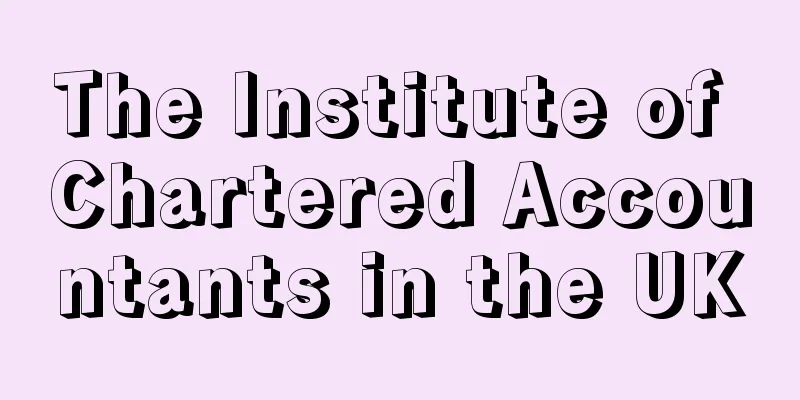

![Attu [island] - Attu](/upload/images/67cad54641a47.webp)


